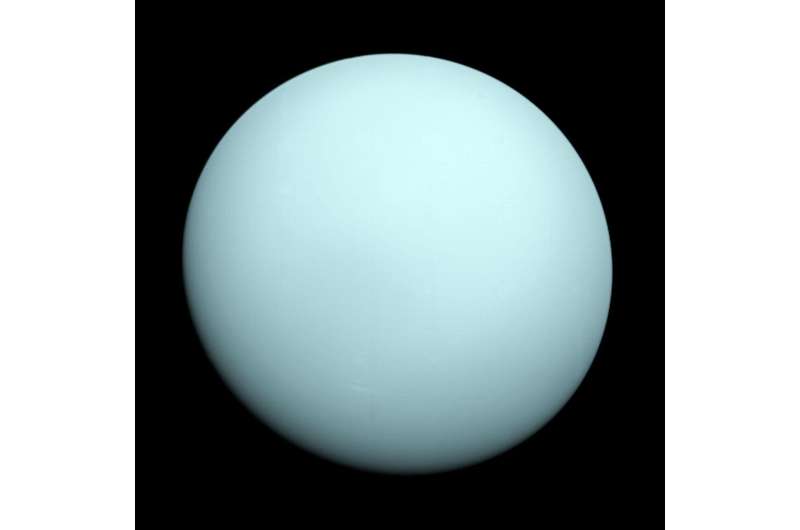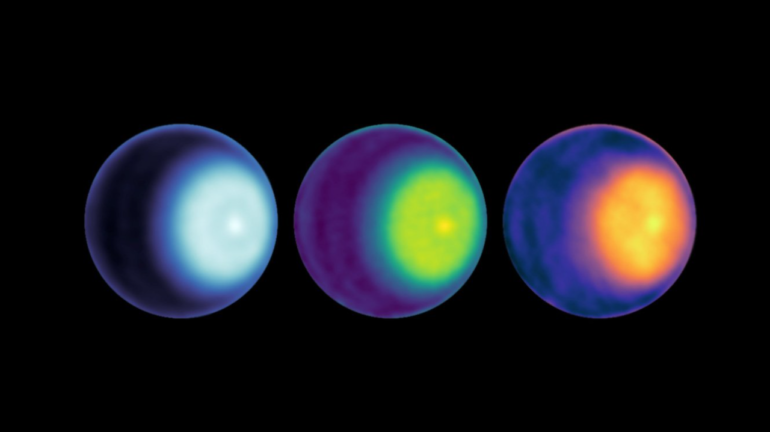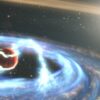Scientists used ground-based telescopes to get unprecedented views, thanks to the giant planet’s position in its long orbit around the sun.
For the first time, NASA scientists have strong evidence of a polar cyclone on Uranus. By examining radio waves emitted from the ice giant, they detected the phenomenon at the planet’s north pole. The findings confirm a broad truth about all planets with substantial atmospheres in our solar system: Whether the planets are composed mainly of rock or gas, their atmospheres show signs of a swirling vortex at the poles.
Scientists have long known that Uranus’ south pole has a swirling feature. NASA’s Voyager 2 imaging of methane cloud tops there showed winds at the polar center spinning faster than over the rest of the pole. Voyager’s infrared measurements observed no temperature changes, but the new findings, published in Geophysical Research Letters, do.
Using huge radio antenna dishes of the Very Large Array in New Mexico, they peered below the ice giant’s clouds, determining that the circulating air at the north pole seems to be warmer and drier—the hallmarks of a strong cyclone. Collected in 2015, 2021, and 2022, the observations went deeper into Uranus’ atmosphere than any before.
“These observations tell us a lot more about the story of Uranus. It’s a much more dynamic world than you might think,” said lead author Alex Akins of NASA’s Jet Propulsion Laboratory in Southern California. “It isn’t just a plain blue ball of gas. There’s a lot happening under the hood.”

This image of Uranus was taken by NASA’s Voyager 2 spacecraft in 1986. © NASA/JPL-Caltech
Uranus is showing off more these days, thanks to the planet’s position in orbit. It’s a long haul around the solar system for this outer planet, taking 84 years to complete a full lap, and for the last few decades the poles weren’t pointed toward Earth. Since about 2015, scientists have had a better view and have been able to look deeper into the polar atmosphere.
Ingredients for a cyclone
The cyclone on Uranus, compactly shaped with warm and dry air at its core, is much like those spotted by NASA’s Cassini at Saturn. With the new findings, cyclones (which rotate in the same direction their planet rotates) or anti-cyclones (which rotate in the opposite direction) have now been identified at the poles on every planet in our solar system except for Mercury, which has no substantial atmosphere.
But unlike hurricanes on Earth, cyclones on Uranus and Saturn aren’t formed over water (neither planet is known to have liquid water), and they don’t drift; they’re locked at the poles. Researchers will be watching closely to see how this newly discovered Uranus cyclone evolves in the coming years.
“Does the warm core we observed represent the same high-speed circulation seen by Voyager?” Akins asked. “Or are there stacked cyclones in Uranus’ atmosphere? The fact that we’re still finding out such simple things about how Uranus’ atmosphere works really gets me excited to find out more about this mysterious planet.”
The National Academies’ 2023 Planetary Science and Astrobiology Decadal Survey prioritized exploring Uranus. In preparation for such a mission, planetary scientists are focused on bolstering their knowledge about the mysterious ice giant’s system.
More information:
Alex Akins et al, Evidence of a Polar Cyclone on Uranus From VLA Observations, Geophysical Research Letters (2023). DOI: 10.1029/2023GL102872
Citation:
Scientists make first observation of a polar cyclone on Uranus (2023, May 23)



